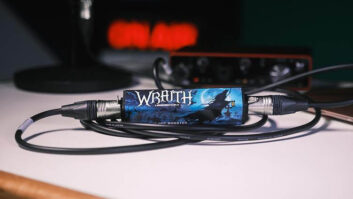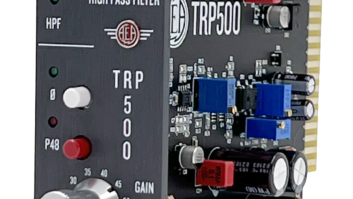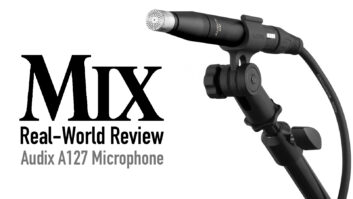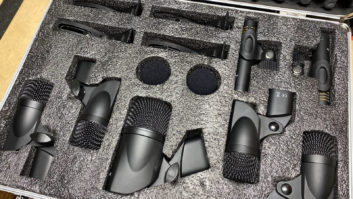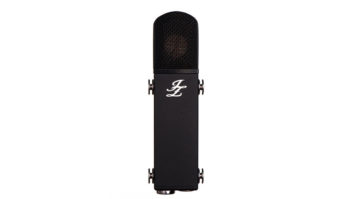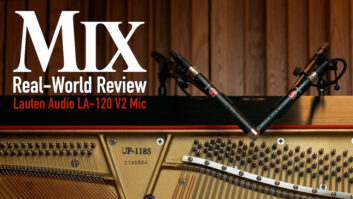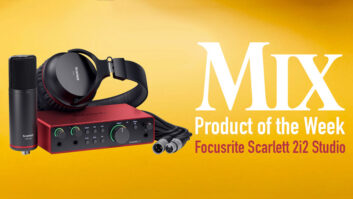A RibbonMics.com Publication.
Studio ribbon mics are smooth and versatile performers that sound good on a wide variety of music. They’ve proven themselves in daily use for over 70 years. However to achieve this great sound quality the right mic pre-amp is essential. This essay is about how mic pre-amps interact with microphones, with an emphasis on ribbon and other dynamic mics. Which mic pre-amps are best? Trust your ears and start listening to mic pre-amps you own or borrow.
As you gain experience, you’ll discover that a quiet, distant, solo acoustic guitar, will need 70 dB or more of clean, quiet gain. Older classics such as the ‘class A’ Neve designs were designed to provide this gain. Many contemporary, stand-alone mic pre-amps sound good and can be ordered with extra gain. Ribbon mics deliver extraordinary dynamic range, especially with percussion. Your experiences will tell you whether a specialty pre-amp might help you best capture the sounds you value.
High performance, specialty pre-amps start at around $700, and choices multiply amazingly as you get to $1,000 per channel. Mic pre-amps with transformers tend to have more of a sound of their own, and have a lower input impedance. Transformerless designs tend to be more neutral and open sounding, quieter, and have a higher input impedance. The input impedance should be at least 1,000 ohms for ribbon mics, although 1,500 ohms is better. Wider ribbons, such as found in AEA and Cole’s mics are less influenced by the lower range of impedances. Narrower ribbons, such as in the RCA 77 and the Speiden/Royer stereo mics, are more influenced.
Integrated, DC-powered active electronics, as used on the old Cambridge or the new Royer P48 powered ribbon mics, reduce the influence of a mic pre-amp’s input impedance. However, with P48 phantom powered mics, the 6,800 ohm current limiting resistors in the phantom supply limit a mic’s performance potential. Ribbon mics have very low impedance transducers, and for optimum noise performance, their electronics need more current. P48 powering was designed to operate high-impedance condenser mic transducers, and their electronics.
Microphone output loading is another term for the interaction between a mic’s
output impedance and a mic pre-amp’s input impedance. Richard Werner of RCA
published an AES paper in 1955 showing that the overall frequency response is
altered by this interaction. He measured an RCA 77’s impedance variation with
frequency, and an RCA mic pre-amp’s input impedance at the same frequencies.
His paper demonstrates how this changes the overall frequency response.
The nominal source impedance of a balanced output professional mic can be as low as 20 ohms, is typically from 150 up to 300 ohms, and occasionally is as high as 600 ohms. A balanced low impedance design minimizes hum pickup, and reduces high frequency loss and slew rate limiting caused by the higher capacitance of longer mic cables.
Microphones are not designed to drive a matching load. If your microphone’s output impedance is 300 ohms and the pre-amp’s input load is 300 ohms, you‘re attenuating the mic’s signal by six dB.
Raising the input impedance to 2700 ohms, reduces that attenuation to one dB, and increases the system’s signal to noise by five dB.
Mic output and pre-amp input impedance vary with frequency, sometimes significantly. Richard Werner’s AES paper documents a worse case scenario. He pairs a 250 ohm output RCA 77D, narrow ribbon mic, with the 1,500 ohm input of transformer-coupled tube mic pre-amp. The mic’s nominal 250 ohm output impedance soars to 1300 ohms mic at its 50 Hz or so resonance. At this frequency the pre-amp’s nominal 1500 ohm input impedance sagged to around 600 ohms. The result is a deep hole in the bass response of this combination below 100 Hz.
To hear a microphone as its designer intended, the pre-amp’s input impedance should be at least 1,500 ohms and consistent across the audio band. Even above and below the 20 -20 kHz audio band, the input impedance should stay high, as out-of-band load changes can affect in-band sonics. A rule of thumb is that a mic’s load impedance should be five or more times the mic’s source impedance. For a 300 ohm mic, such as the Coles 4038, this would translate to a 1,500 ohm load. For a 150 ohm source mic, such as most Neumann mics, this would mean a minimum load of750 ohms.
With such a low impedance load, P48 phantom powered electronics can run out of current at high sound pressure levels. With such mics, the sound can improve significantly if loaded into a higher input impedance. The lower impedance preamp input a mic must drive, the harder it has to work. For condenser mics or others with built in electronics, driving too low of a load impedance is heard as decreased headroom, increased distortion, and especially when driving long mic cables, as high frequency limiting at high SPL.
In 1985 AEA built a limited run of transformer-coupled, stereo mic pre-amps with 84 dB of gain. These pre-amps had a user adjustable input impedance switch, so different mics could achieve their best square wave response. A number of mic pre-amps now offer user adjustable input impedances. Such mic pre-amps can alter the load a mic drives in a variety of ways. These changes range from simply varying the resistive loading a mic must drive, to the complexity of changing the turns ratio (impedance transformation) of an input transformer, and / or its secondary loading.
Changing the turns ratio and secondary loading of a mic input transformer, can change a mic’s sound on transients from dull to open to ringing. Mic pre-amp designers typically aim for transients that are neither over-damped i.e. dull and lifeless, or under-damped with excessive ringing. However designers have no control over which mics their pre-amps are used with. Thus the same mic, used with different pre-amps, can yield a quite different sound.
Transformers, like ribbon mics, look simple, and are quite complicated. Here are five common and uncommon events that will change the sound of any transformer.
- When the source impedance (the microphone output in this case) changes.
- When the turns ratio is changed.
- When the load on the transformer’s output side (secondary) changes
- When the audio is softer or louder than the transformer’s linear operating
range. - If DC through a winding magnetizes the core material and it becomes less
linear.
These variables can alter a pre-amp’s overall sound in quite complex ways, both in the 20-20kHz audio-band frequency response, and the frequency response above and below these points. Interestingly enough, changes in the out-of-band response will impact a pre-amp’s sound, especially with regards to transient response. As with any signal processing, you get to decide whether this is a change for the better or worse.
To summarize everything above, the most relevant aspects of a mic pre-amp’s input impedance are:
- How does it change the useable output level and linearity of a microphone?
- How does it alter the frequency and transient response of its microphone?
I’ve listened to, set up, used, repaired and manufactured ribbon mics for over forty years. Ribbon mics were the high performance standard when I was young and were being replaced by moving coil and condenser mics as I learned my craft. More recently ribbon mics have enjoyed a renaissance. All these years a number of competent audio engineers have used them daily. Why ? Because they sound good in a wide range of situations and when available are often the mic of choice for engineers, producers, musicians and listeners.
What I know is based upon what others have shared with me. Thank you for the
chance to pass along a bit of that knowledge to you. A number of technical terms
in this short essay about mic pre-amps can be found at www.stereosoundbook.com
in the glossary section. Enjoy, Wes Dooley www.wesdooley.com

